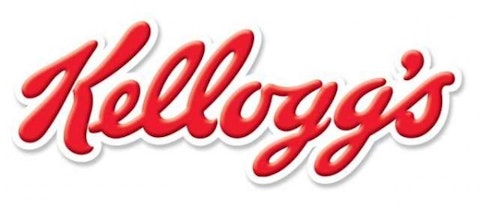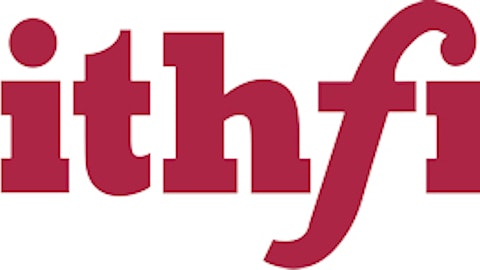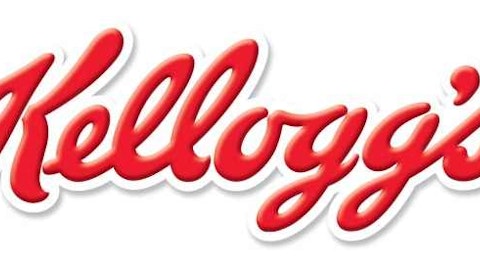Today we’re going to look at three global giants in the food products manufacturing sector; specifically chocolate, cereal, snacks and meat. Add a beer stock to the mix and we’d have all the important food groups covered.

Sweet growth, sweet profits, sweet dividends
The Hershey Company (NYSE:HSY), practically synonymous with chocolate, manufactures and distributes candy, mints and gum under brand names we all know, such as The Hershey Company (NYSE:HSY)’s, Reese’s and Kit Kat. The company’s global reach includes marketing in 70 countries.
The Hershey Company (NYSE:HSY)’s second quarter results were definitely a treat for investors. Net sales were up 6.7% compared to the similar quarter of 2012. Net income soared 17.6% to nearly $160 million. Net income as a percentage of revenue rose a full 1 percent.
The company reported that its U.S. market share rose in every channel, resulting in a total market share increase of 1.4%. Gross margin percentage showed outstanding improvement, up 3.9% year-over-year. Lower commodity costs, the payoff from cost savings initiatives, and fixed costs being spread over a large sales volume all contributed to The Hershey Company (NYSE:HSY)’s margin improvement.
The Hershey Company (NYSE:HSY) announced a 15% increase in the quarterly dividend to $0.485 per common share. Jim Cramer of CNBC’s “Mad Money” program made an odd comment about Hershey and its dividends, saying that investment “pros” (whoever they might be) may not value avid dividend payers like Hershey as highly now that interest rates have been rising, which makes dividend yields look less enticing.
In my view, The Hershey Company (NYSE:HSY) isn’t a boring utility company — it’s growing at a very nice clip. The dividends are just the frosting on the delicious earnings confection this company whips up.
By no means a flaky or corny investment
Kellogg Company (NYSE:K) is the world’s largest cereal company and ranks second in the production of cookies and crackers. Kellogg Company (NYSE:K)’s beloved brands — beloved by both consumers and the company’s shareholders — include Special K, Frosted Flakes and Rice Krispies. In 2012 it made a strategic acquisition of Pringles, the potato chip snack company.
Second quarter revenues for Kellogg were up 6.9% over the same quarter of 2012, to $3.7 billion. Net income rose 8.6%.
Net sales rose in all segments and regions of Kellogg Company (NYSE:K)’s global marketing operations — with the exception of U.S. Morning foods, which declined 3%. Operating profit rose in all segments, including U.S. Morning foods, except in the Latin American region.
Nothing fowl about this company’s performance
Tyson Foods, Inc. (NYSE:TSN) describes itself as “a diversified multi-protein business.” It produces a wide range of chicken, beef and pork products, including bacon and deli meats. The company markets its products in 130 countries.
I liked the positive attitude in their second quarter press release headline: “Chicken Surges to Record Earnings and Beef Rebounds.” I felt like shouting: “Way to go, Chickens!”
Sales for the fiscal third quarter reached a record level of $8.7 billion. The chicken segment accounted for $3.2 billion, or 36% of the total. Chicken revenues rose an impressive 10.6% compared to the same quarter of 2012. The increase was due to both higher volume, up 4.4%, and higher prices, up 6%. Beef, Tyson Foods, Inc. (NYSE:TSN)’s largest segment, achieved revenues of $3.7 billion in the quarter, up nearly 7% on a 3.8% increase in volume and 2.9% higher prices.
Tyson Foods, Inc. (NYSE:TSN)’ operational efficiency shows up in its gross profit, which rose to 7.8% of sales compared to 6.9% of sales in 2012. That’s the number that tells the story of the company’s performance. SG&A expenses are a tiny 3% of sales.
Operating income rose more than 22% to $419 million. The chicken segment accounted for $220 million of this, and beef was $114 million.
What we learned
The Hershey Company has a competitive advantage that it expresses elegantly as “channel ubiquity.” In essence, that means the company’s products are sold everywhere — convenience stores, wholesale clubs, mass merchandisers, drug stores and supermarkets. Wherever we shop, a Hershey’s product is within reach, beckoning us.
That said, there’s room to grow. According to CompaniesAndMarkets.com, chocolate products are expected to remain the largest segment of the confectionary market and the fastest growing over the next five years, with a CAGR of 3.2 percent.
Kellogg Company (NYSE:K)’s strategy includes going after baby boomers who are concerned with maintaining good health as they (gracefully) age. It is also developing product innovations such as “Special K Nourish,” which has a formula for weight management that features the superfoods quinoa, oats and barley.
The acquisition of Pringles gives the company a larger presence in the snack market. According to research firm IBISWorld, potato and other chip products account for nearly 50% of this $31 billion market.
I wouldn’t have expected this, but Tyson Foods, Inc. (NYSE:TSN) is the largest of the three companies in terms of sales revenue. According to the National Chicken Council, chicken is the number one protein consumed in the United States. The average American consumes nearly 84 pounds of chicken per year. Tyson Foods, Inc. (NYSE:TSN)’ performance is even more remarkable given the Council’s forecast of relatively low growth in chicken production in 2013.
Tyson is also putting an emphasis on product innovation as a key driver of future growth — and a way of sparking customer interest when demand is soft.
The Bottom Line
So we have three companies with great management, global presence, an emphasis on innovation and excellent near-term results.
Kellogg Company (NYSE:K)’s battle for market share takes place in the brutally competitive grocery store channel, where private label cereals are right next to the company’s brand name products on the shelves. The decline in U.S. Morning foods sales is troublesome. The company’s marketing team should look at it as a wake-up call, so to speak.
Tyson Foods, Inc. (NYSE:TSN)’ beef segment volume is huge. We’ve seen increases in the prices of beef and may see more. Can these be passed on to the middle-class consumer that Tyson caters to, or will sales be negatively affected?
I like The Hershey Company (NYSE:HSY) best because of that channel ubiquity advantage, the company’s ability to grow its brands globally, and because in consumers’ minds there are no substitutes for its branded products. Sometimes you just gotta have a Hershey bar.
The article Three Food Products Companies to Nourish Your Portfolio originally appeared on Fool.com and is written by Brian Hill.
Brian Hill has no position in any stocks mentioned. The Motley Fool has no position in any of the stocks mentioned.
Copyright © 1995 – 2013 The Motley Fool, LLC. All rights reserved. The Motley Fool has a disclosure policy.




